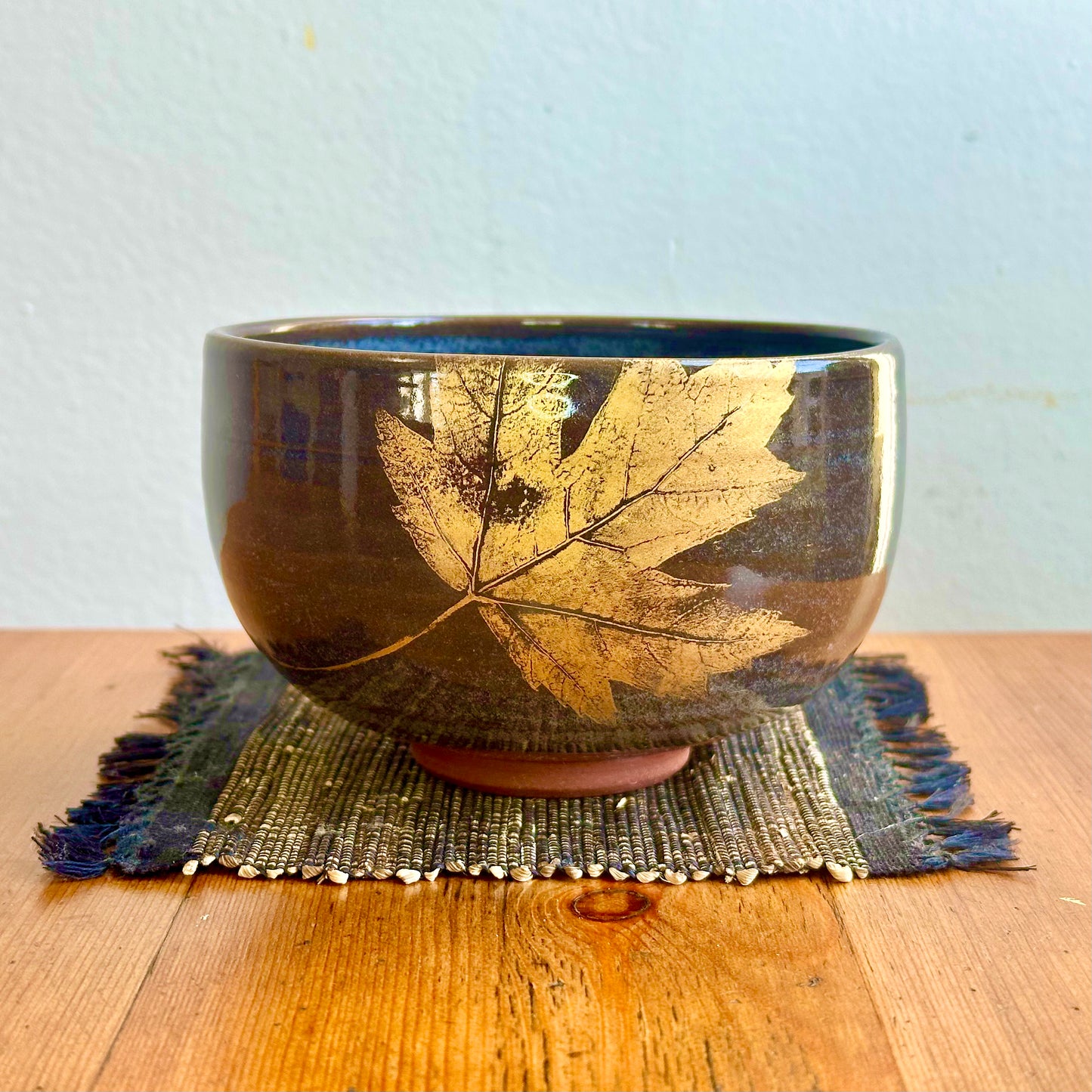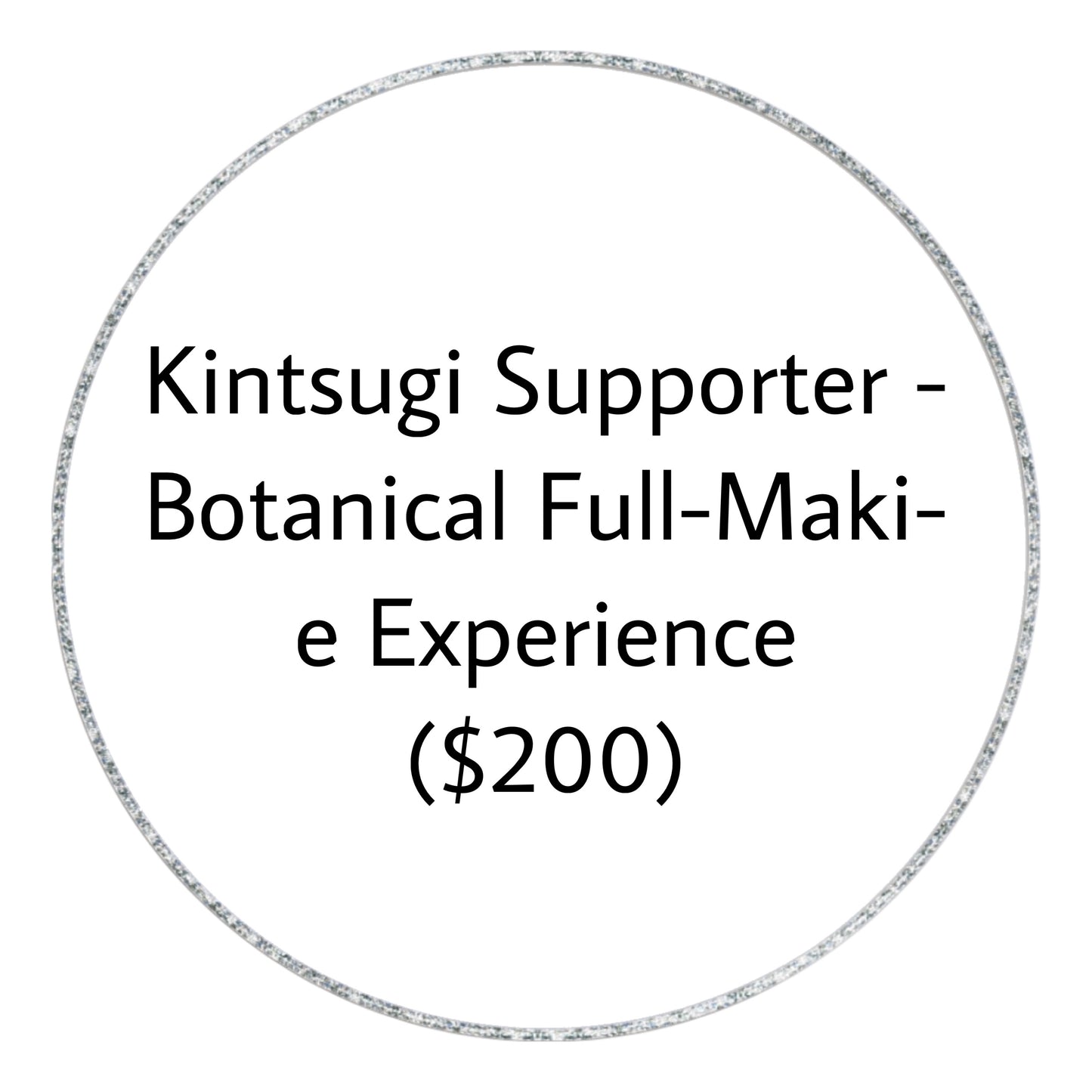My Store
General Supporter - Botanical Full-Maki-e Experience ($200)
General Supporter - Botanical Full-Maki-e Experience ($200)
Couldn't load pickup availability
Support the Kintsugi project while learning the art of Kintsugi and experiencing the beauty of autumn through Maki-e.
This package includes the following:
① Kintsugi Lecture and botanical Maki-e Workshop
In this workshop, you’ll start by learning about the history, materials, and philosophy of Kintsugi. After the lecture, you will capture the essence of autumn through Maki-e, a 700-year-old gold decoration technique. By transferring the delicate shapes of autumn leaves onto your own item, you will enclose the beauty of the season in your design. You can also add a small name or message in gold to personalize your piece.
While Maki-e experiences at events or festivals are often limited in time, this workshop provides ample time for a complete, unabridged Maki-e experience without skipping any steps in the process.
Date:
October 22 (Tuesday), 6 PM – 9 PM
November 17 (Sunday), 3 PM – 6 PM
Location:
Near Christie Station, Toronto
What to Bring:
Item: The item you want to apply Maki-e to
Airtight container: Please bring a container, like a Tupperware, that can securely enclose your item. After the workshop, the Urushi needs to be cured inside the container for an additional 5-7 days. Since Urushi requires humidity to cure properly, a damp cloth will be placed inside the container to maintain the necessary environment.
Long-sleeved clothing
Suitable Materials items for Maki-e:
Maki-e works best on smooth surfaces. Rough or uneven surfaces may not hold gold successfully. Suitable materials include:
・Bamboo
・Wood
・Ceramics (glazed, smooth surface)
・Glass
・Plastic
We will trace the shapes of autumn leaves, such as Japanese maple, ginkgo, and oak, onto your item. It’s best to choose items with a smooth, wide, flat surface, like plates or trays, to capture the leaf design effectively. Avoid surfaces that are frequently rubbed, such as areas where a knife might scratch. The ideal surface size for Maki-e is around 3x3 to 5x5 inches. Items like Muji bowls or trays can also work well for this design.
Unsuitable Materials for Maki-e:
・Metal
・Rubber
・Silicone
For inquiries regarding other materials, please feel free to consult with us about your design idea introjapanca@gmail.com with the title: "Full Maki-e Workshop Inquiry."
*Please note that we will be using authentic urushi (lacquer) in this workshop, following traditional techniques. Urushi, derived from the sap of the lacquer tree, is used throughout the Kintsugi process—for bonding, filling gaps, and attaching gold. Because this natural urushi is used, Kintsugi and Maki-e creations will be food-safe. However, be aware that if you touch uncured urushi with bare skin, it can cause allergic reactions or rashes. We will provide gloves, and it's important to follow the instructor's guidance. Please note that we cannot take responsibility for any allergic reactions.
② Kintsugi postcard set:
This set features Kintsugi artworks by Shuichi, one of the world’s leading Kintsugi masters. Each postcard is inscribed with timeless Japanese philosophical sayings, offering inspiration for life.
③ Name acknowledgment:
As a token of our gratitude for supporting Kintsugi: In Praise of Cultural Resilience, your name will be acknowledged on social media and our website.
Share



